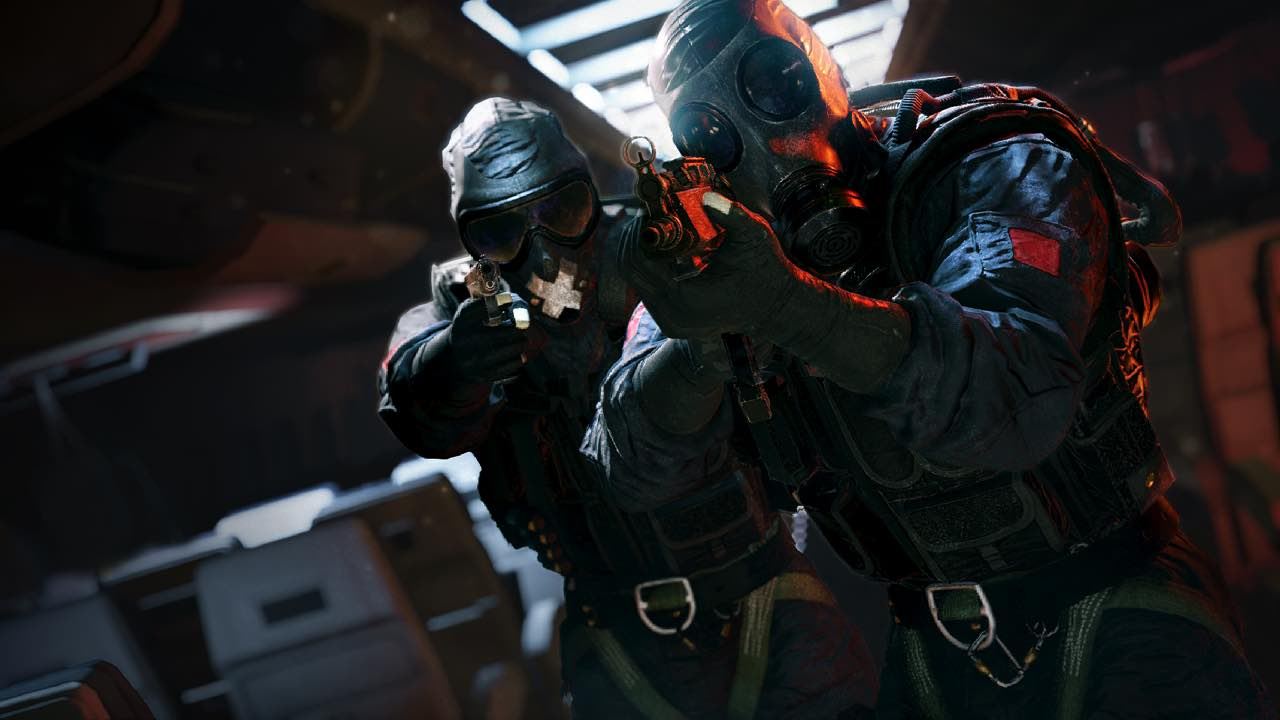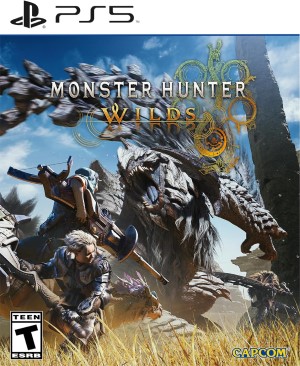
The tension is palpable. My team is on the attacking side and I pretty much took it upon myself to try and flank the enemy’s position – located one floor above us – while my allies rappelled up for a window entry. Suffice to say, this didn’t work out well as I was gunned down by a shotgun from behind while running up the stairs. My team was being slaughtered but there was one operator – Glaz – who managed to stay alive. It eventually came down to the shotgunner and Glaz. Glaz had a hand on the hostage but the footsteps of the shotgunner echoed throughout. I was on the edge of my seat…until the enemy poked out his head and took a single bullet to the brain. Sure, I was dead for the biggest play but it was tense all the same.
"The key twist to Rainbow Six Siege is the attacking and defending sides. When starting a match, you’ll either be in charge of assaulting the enemy team’s position or defending your own position against enemies."
That being said, there have been moments in Rainbow Six Siege where my team-mates and I simply hunkered down in a room, waiting for the enemies to attack. No tension, no big strategic meeting – just sitting around, waiting for things to happen but never letting our guard own. In many ways, that describes Rainbow Six Siege pretty well. Even when it seems like nothing is happening, there’s a buzzing in the air, even if it’s just peeking around that corner for the next hostile. But when there’s only this much content to begin with and no proper single-player campaign, it’s hard to really commit to the life of a Counter Terrorist.
Rainbow Six Siege operates on a completely different model from previous titles. You have 10 Situations that can be played solo, which are just training scenarios to get you acquainted with some of the different modes and objectives. Completing these earns you Renown which you use to purchase Operators with differing stats and abilities. From there, you can either head into Terrorist Hunt and beat down AI controlled bots with four other players or you can engage in competitive multiplayer against a human team. Each round will have an intriguing objective to it – like disabling bombs, rescuing hostages or eliminating opposing enemies – and the team that wins 3 rounds first wins the match. It should be noted that these varying objectives also fit into Terrorist Hunt and there may be times where you’re tossed into the defense side, fighting off waves of terrorists within a confined space.
The key twist to Rainbow Six Siege is the attacking and defending. When starting a match, you’ll either be in charge of assaulting the enemy team’s position or defending your own position against enemies. Attackers have drones which can be remotely controlled to call out enemy positions and breach charges for destroying barricades. Defenders can put up fortifications to shoot from and barbed wire to slow enemies down. You can also barricade doors, reinforce walls and plant C4 charges.
"But hey, even if you want to just hang back in Terrorist Hunt, for instance, and just operate a drone to call out hostiles for your team-mates, you can very much do so. One doesn’t even have to worry about unlocking Operators as gaining Renown is a fairly quick process."
It’s the Operators that further mix up the attacking and defending dynamic. Each Operator has a unique set of skills and there are numerous characters devoted to purely attacking and defending. For instance, IQ is an attacker who can detect electronic devices nearby, which can then be shot with a pistol. The aforementioned Glaz carries a rifle which works wonders for mid-range shooting but can also go long-range with an infra-red scope. When you mix these different Operators together, various team dynamics can be formed. Some Operators have very niche skills like Thermite’s ability blow through reinforced walls and Rook, who can reinforce allies with Rhino armour plates. Destructibility plays a big part in matches, as you never know whether you’ll be assaulted from above or below.
But hey, even if you want to just hang back in Terrorist Hunt, for instance, and just operate a drone to call out hostiles for your team-mates, you can very much do so. One doesn’t even have to worry about unlocking Operators as gaining Renown is a fairly quick process.
Multiplayer performance is very solid from launch day itself – in the many hours played, I encountered server problems for roughly five minutes. There are some issues regarding hit markers and a touch of lag but nothing that truly ruined the experience. Animation glitches are surprisingly a thing and you’ll notice corpse or two clipping into walls at times. There’s also that one odd crash also occurred, booting me back to the desktop. Graphical performance was incredibly stable on my Intel-Core i5 4th gen and GeForce GTX 660. It could manage environmental destruction, bullets flying everywhere and explosions on Medium details and 1920×1080 resolution while still maintaining a stable frame rate.
"It’s not like Halo 5: Guardians which constantly rewards you with REQ Packs. There isn’t a huge variety of modes and most matches often boil down to eliminating the enemy team quickly."
Though there are 11 maps in total to experience, it oftentimes felt like the same annoying map with the chemical agents that obscured your vision was in constant rotation. The environments themselves are varied enough and present interesting challenges, from invading a peaceful suburban home to, well, invading a peaceful mountain lodge. I only wish I got to experience a greater variety of maps within an hour. At least the ability to attack and defend from different places with varying objectives lends some variety.
Many could point to the absolute lack of single-player and criticize Rainbow Six Siege on that basis. However, Ubisoft’s efforts towards making this a competent multiplayer shooter in which players can have fun, even without extensive communication, should be noted. Granted, the team that communicates better will succeed more often but even on the basis of matchmaking, I was still able to have a good time with Siege. The mechanics do make me wish for a dedicated single-player campaign though, if only because past Rainbow Six games have shown Ubisoft capable of fun experiences. Even if it was short, it would have definitely been better than the 10 Situations provided because of the added value to the package.
And that’s what really makes me wonder about Rainbow Six Siege’s staying power. It’s not like Halo 5: Guardians which constantly rewards you with REQ Packs containing skins and such (though you can use Renown to buy weapon skins in Siege as well). There isn’t a huge variety of modes and most matches often boil down to eliminating the enemy team quickly. Despite my utter dislike for Star Wars Battlefront’s repetitive gameplay and terrible spawns, the Star Wars franchise still has some nostalgic appeal with its visuals and sound effects. For now, Rainbow Six Siege makes for a rollicking good time, both in co-op and competitive. It shoots straight and true with a razor-sharp focus on team-work, tactics and objective play. Now, it just needs more content, more updates and some more interesting ways for players to experience all these intriguing Operators.
This game was reviewed on PC.
Strong performance and visual design. Well structured maps. Various operators provide interesting variety to gameplay. Terrorist Hunt can be lots of fun. Differing objectives and the attack/defend aspects work very well, whether in co-op or competitive.
Animation glitches can be fairly common. Despite reliable graphical performance, crashes can occur. Not a lot of variety in game modes or a wide range of maps to choose from. The game's future will be decided by the quality of future updates. Proper single-player campaign would have definitely added to the value.




















